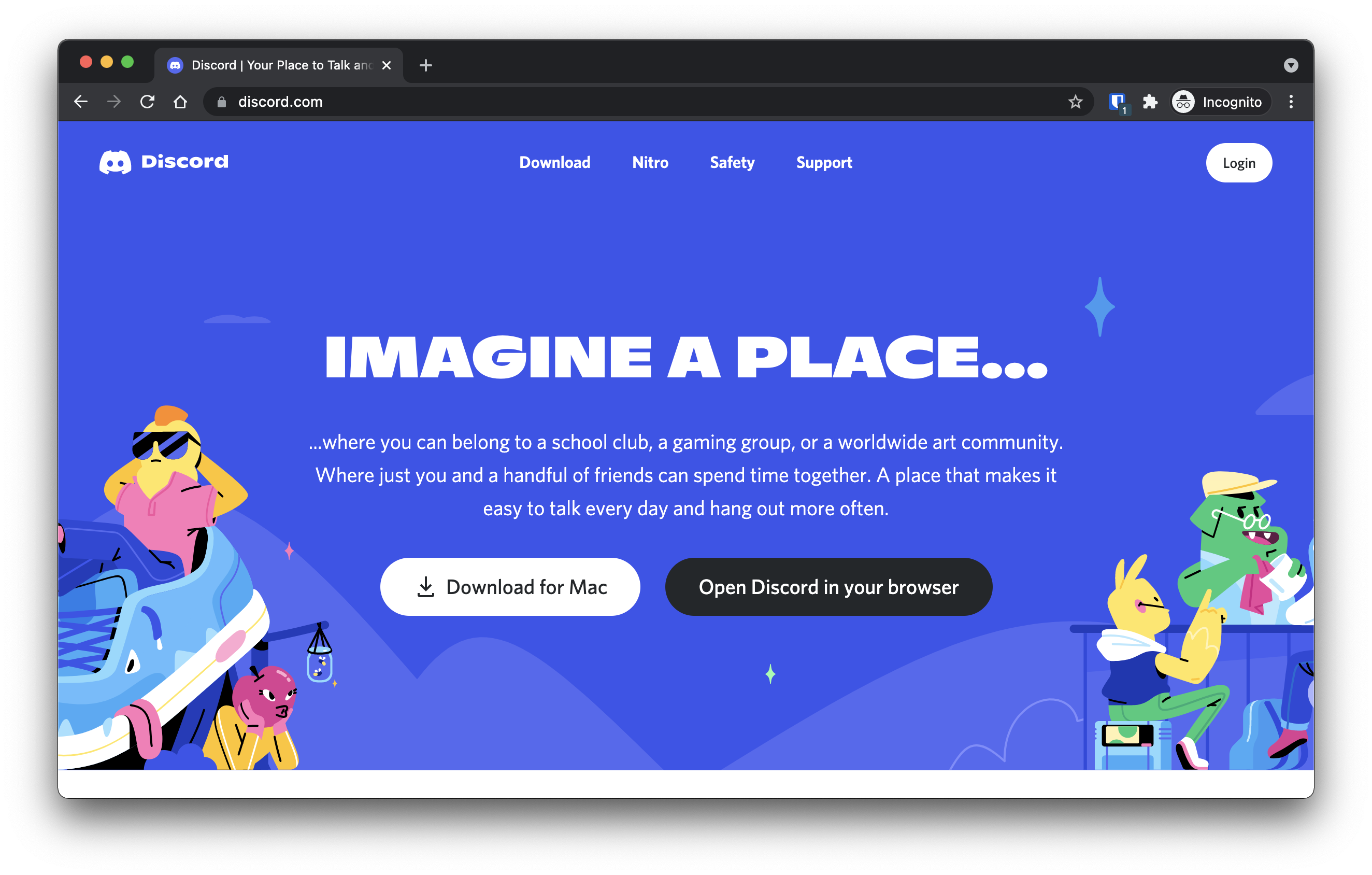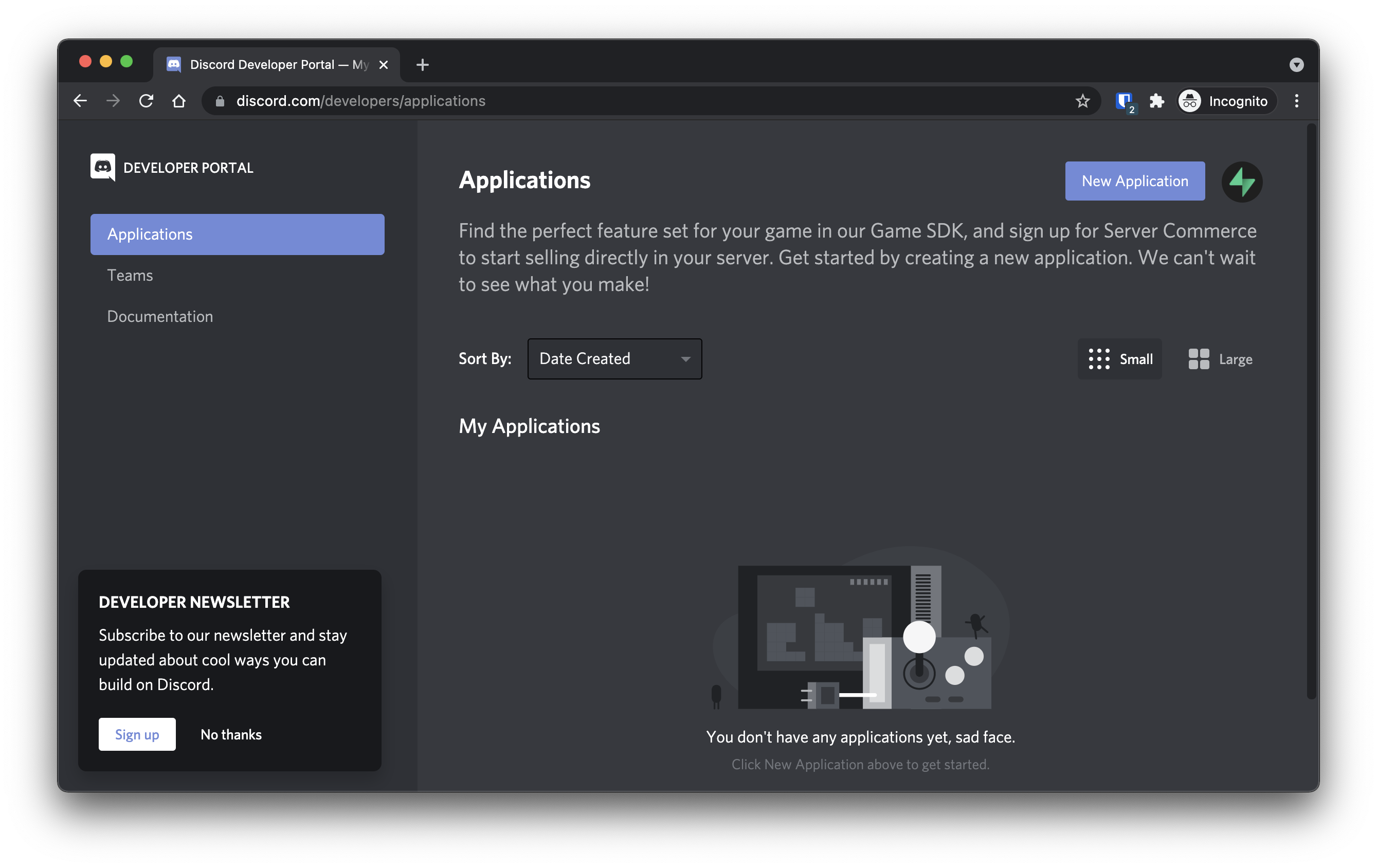Login with Discord
To enable Discord Auth for your project, you need to set up a Discord Application and add the Application OAuth credentials to your Supabase Dashboard.
Overview#
Setting up Discord logins for your application consists of 3 parts:
- Create and configure a Discord Application Discord Developer Portal
- Add your Discord OAuth Consumer keys to your Supabase Project
- Add the login code to your Supabase JS Client App
Access your Discord account#
- Go to discord.com.
- Click on
Loginat the top right to log in.

- Once logged in, go to discord.com/developers.

Find your callback URL#
In the next step you require a callback URL, which looks like this:
https://<project-ref>.supabase.co/auth/v1/callback
- Go to your Supabase Project Dashboard.
- Click on the
Settingsicon at the bottom of the left sidebar. - Click on
APIin the list. - Under Config / URL you'll find your API URL, you can click
Copyto copy it to the clipboard. - Now just add
/auth/v1/callbackto the end of that to get your fullOAuth Redirect URI.
Create a Discord Application#
- Click on
New Applicationat the top right. - Enter the name of your application and click
Create. - Click on
OAuth2underSettingsin the left side panel. - Click
Add RedirectunderRedirects. - Type or paste your
callback URLinto theRedirectsbox. - Click
Save Changesat the bottom. - Copy your
Client IDandClient SecretunderClient information.
Add your Discord credentials into your Supabase Project#
- Go to your Supabase Project Dashboard
- In the left sidebar, click the
Authenticationicon (near the top) - Click
Settingsfrom the list to go to theAuthentication Settingspage - Enter the final (hosted) URL of your app under
Site URL(this is important) - Under
External OAuth ProvidersturnDiscord Enabledto ON - Enter your
client_idandclient_secretsaved in the previous step - Click
Save
Add login code to your client app#
When your user signs in, call signInWithOAuth() with discord as the provider:
1async function signInWithDiscord() {
2 const { data, error } = await supabase.auth.signInWithOAuth({
3 provider: 'discord',
4 })
5}
If your user is already signed in, Discord prompts the user again for authorization.
When your user signs out, call signOut() to remove them from the browser session and any objects from localStorage:
1async function signout() {
2 const { error } = await supabase.auth.signOut()
3}